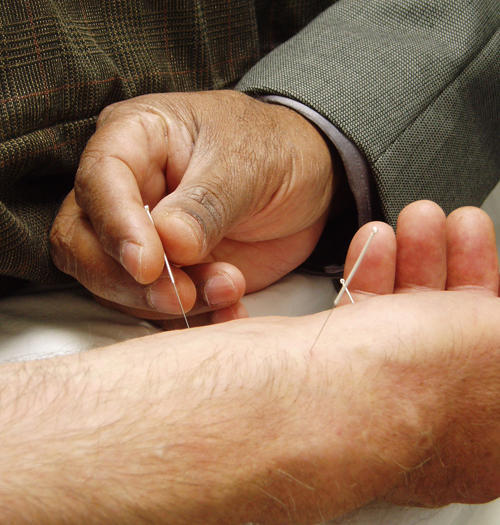History of Acupuncture 
Acupuncture is a medical procedure used to remedy various illnesses by inserting thin needles at specific parts of the body. It originated from Chinese medicine and has been around for about 5000 years. From China, it spread all over eastern Asia but even until the 19th century, the Western world was by and large sceptical about acupuncture. Since the 1970s, however, it has become a popular practice the world over, not only for therapy and treating illness but also for relieving pain, stimulating muscles, and anesthetizing patients during surgery.
Treating Common Ailments with Acupuncture
As a form of alternative medicine recognised by the World Health Organization, acupuncture is widely used for treating problems such as headaches, gastroenteritis, sports injuries, anxiety, back pain, osteoarthritis, allergic rhinitis, PMS, and depression. Acupuncture is a holistic, non-drug approach to healing although many practitioners use it in conjunction with other (drug-based) forms of treatment. A study funded by the National Centre for Complementary and Alternative Medicine (NCCAM) revealed that acupuncture aids mobility in people with osteoarthritis of the knee. The same study also concluded that acupuncture provided overall relief from pain and is effective even when combined with standard forms of medicine.
Acupuncturists trace symptoms of disease to the stagnation of blood and energy in and around the body organs. This stagnation is remedied through acupuncture which then alleviates the symptoms.
Acupuncture Points
According to the principles of acupuncture, there are 12 main ‘channels’ (meridians) in the human body corresponding to the lungs, large intestine, liver, stomach, heart, small intestine, kidney, pericardium, bladder, spleen, gall bladder and the conceptual ‘San Jiao’ (not a physical organ, it is a general metaboliser in the human body). – Through these channels, blood and energy (qi, in Chinese) must flow uninterrupted for a healthy mind and body. When blood and energy stagnate at any point, the result is sickness. Each of the 12 channels has corresponding acupuncture points where needles are actually inserted.
How Acupuncture Works
According to Chinese thought, yin and yang are the male and female principles of creation, two interconnected and mutually dependent forces that pervade all of nature and therefore, our bodies, too. Yin and yang are inseparable, transformative forces that never exist in a 50:50 balance. The principles of Chinese medicine attribute disease to excessive yin or yang within the body Acupuncture works by restoring the body’s yin-yang equilibrium.
After the acupuncturist makes a diagnosis (usually by face and tongue analysis), he/she will use special needles along acupuncture points related to any of the 12 meridians to manipulate the flow of energy and blood. (For instance, if your acupuncturist diagnoses stagnation in your liver, needles may be inserted between your toes, in your calves, or in the knee region.) This restores the yin-yang equilibrium of the body resulting in healing and overall wellbeing.
Why Acupuncture Works
According to the Gate-control Theory of Pain (Melzack & Wall, 1962), acupuncture works because it changes pain perception. The Neurohormonal Theory suggests that acupuncture regulates the body’s nervous system which activates the production of endorphins and nitric oxide in the body. Endorphins are the body’s natural pain reliever and stress fighter biochemicals that make you feel good. Nitric oxide enhances blood circulation and keeps your heart healthy. Research also indicates that by altering the production of neurotransmitters, acupuncture changes brain chemistry. This in turn positively affects body functions such as immunity, blood pressure, and temperature.